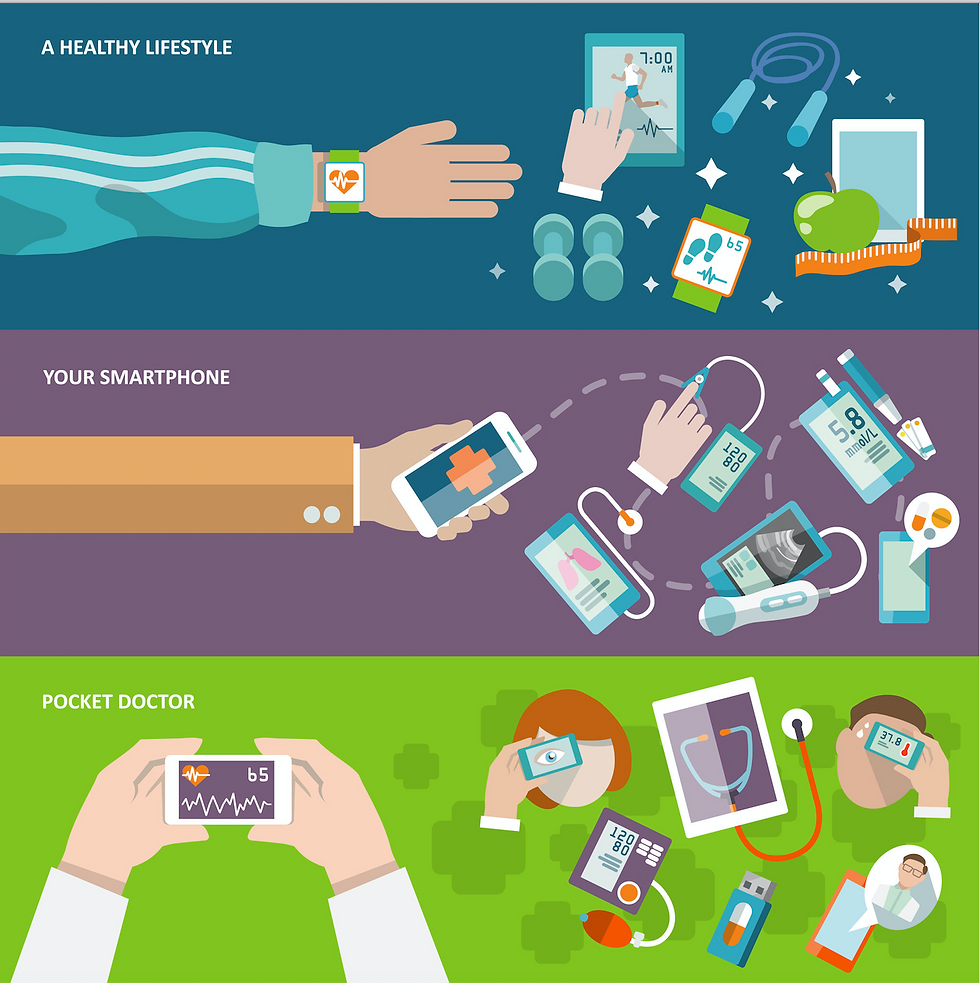Digital should create and reinforce positive new habit cycles in healthcare
- Chris Spencer
- Nov 30, 2017
- 3 min read

Chris Spencer is the former CEO of EMIS Group now engaged in plural roles in digital health including as Health Venture Partner with Catapult Ventures’ GM&C Life Sciences Fund.
We all do bad things to our bodies. Even when we know the risks. Think of nicotine, alcohol, and food. Why do we, as part of the general population, do that?
Can we, as those engaged in digital health, help break that truly vicious circle?
Take, for example, diabetes. Were it infectious it would now be deemed to have reached epidemic proportions. In the UK alone (1) it is estimated to cost the NHS at least £1.5M an hour - 10% of the NHS budget for England and Wales. In 2012, an estimated £13.75 Bn was spent on treating diabetes and its complications. Costs set to rise further with diabetes estimated to affect at least 4M UK patients by 2025. Worldwide, approximately 360M people had diabetes in 2011 - estimated to increase to 552M by 2030 (2).
Yet a high proportion of all those costs, not to mention patients’ suffering, could be avoided. 85% of them relate to type 2 diabetes where risk factors include weight, waist circumference, and low levels of physical activity (as well, of course, as age, gestational diabetes, or a familial predisposition (3)
So, whilst not a silver bullet, lifestyle changes in diet and exercise are strongly recommended for those diagnosed with or at risk of a diagnosis of type 2 diabetes. (4) Yet, despite all that, most of us do not change our patterns of behaviour. Instead we maintain existing patterns detrimental to our health, quality of life, and longevity. Avoidable behaviours like cigarette use, poor diet, and lack of exercise were said to be the underlying cause of half the deaths in the United States in the year 2000. (5)

The reason, at least partly, is rooted in the power of habits.
Habits that have often been maintained over a lifetime. Habits usually fuelled by addictive substances like nicotine, alcohol, or dopamine. Habits that are consequently very hard indeed to change, especially as they appear to our subconscious selves to have served us well.
This mention of the subconscious is key. The traditional approach, educating our conscious mind about the risks of avoidable behaviours, doesn’t reach or affect the sub-conscious root. Even in a brain where viral encephalitis had almost entirely destroyed the medial temporal lobe (where it’s believed all sorts of cognitive facilities sit including recall of the past) old habits persisted and new habits could be learned (6).
So, as education of the conscious mind usually fails, why not turn the power of habit back on the unconscious mind itself?
Habits are stored in a separate part of the brain for quick access – like ROM rather than RAM memory if you will. Storage, or not, is evaluated at the end of a process which, at its simplest, has three steps:
a cue, a trigger that tells your brain to go into automatic mode and which habit to use;
a routine, physical or mental or emotional;
a reward, which helps the brain decide if this habit loop is worth remembering again in the future.
What is today arguably the most powerful habit of all?
A couple of clues: 79% of smartphone owners are said to check their device within fifteen minutes of waking in the morning; 33% of Americans said they would rather give up sex than lose their cell phones. (7)
Just as the designers of the most successful apps and operating systems have consciously engineered their products to manipulate our actions into habits, reinforced by a dopamine hit, we should do the same.
Our apps shouldn’t simply educate and inform our users’ conscious minds. They must also deliberately assist their subconscious minds to suppress existing and damaging habit cycles and to create and reinforce new and positive habit cycles.
This is not simple. It is not quick but, for those involved in health tech apps, whether as creators or users, it could be transformative. In short: “If at first you don’t succeed – make a habit of IT”.
References:
Collated sources as at 14 November 2017 - www.diabetes.co.uk/cost-of-diabetes
ESC Guidelines on diabetes, pre-diabetes, and cardiovascular diseases developed in collaboration with the EASD; European Heart Journal (2013)
Type 2 diabetes prevention: population and community-level interventions; NICE Public Health Guidance (May 2011)
Type 2 diabetes in adults: management; NICE Guidelines (December 2015, updated May 2017)
Cited as at 14 November 2017 - www.livescience.com/1191-bad-habits-stop.html
Duhigg, Charles. The Power of Habit: Why We Do What We Do, and How to Change. Random House
Cited in Edal, Nir. Hooked: How to Build Habit-Forming Products (p. 1). Penguin Books
Chris Spencer is the former CEO of EMIS Group now engaged in plural roles in digital health including as Health Venture Partner with Catapult Ventures’ GM&C Life Sciences Fund.




















































Comments